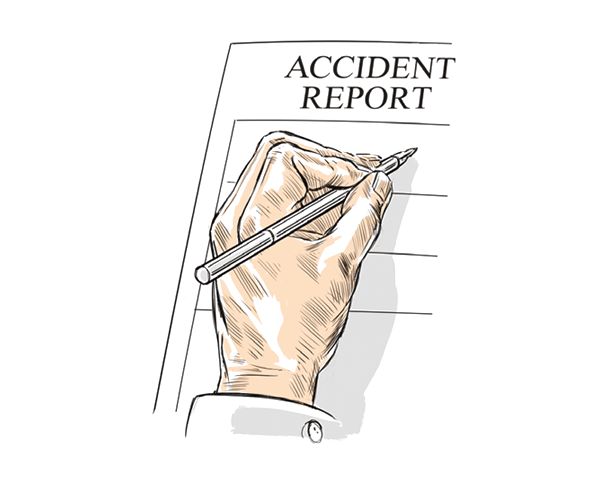No greens, no horn
Rockwell Commander 114
G-BFXS
Little Snoring Airfield, Norfolk
Injuries: None
The pilot was planning to complete two landings at Little Snoring Airfield, before flying to Old Buckenham Airfield to complete the required three landings in 90 days, prior to flying with passengers.
He took off from Runway 07 and completed the first circuit without incident. As he was flying downwind in the second circuit another pilot asked him to extend his circuit to allow them to take off. He extended downwind then made his approach to land.
He thought he had completed his normal downwind checks, which would normally include extending the landing gear, and on final approach he made his normal ‘red, blue, greens’ landing checks.
However, on landing, the propeller and fuselage struck the runway and he realised the landing gear was not selected down. The landing gear warning horn did not sound. The pilot was uninjured and able to exit the aircraft unaided.
The pilot had not flown for several months and he thinks that the lack of currency, combined with the distraction of extending the circuit, led him to forget to extend the landing gear. He believes that on final approach he glanced inside and saw the GPS green light and mistook it for the landing gear green lights.
The landing gear warning horn did not sound because the pilot had selected only partial flap, intending to complete a touch-and-go. The landing gear warning horn sounds when the landing gear is not down and, either the flaps are extended beyond 25°, or when the throttle is retarded below a position corresponding to a manifold pressure of approximately 14in.
Comment Given the long lay-off from flying many of us have experienced, this sort of accident is perhaps unsurprising, but it occurred despite Rockwell’s designers doing their best to warn the pilot.
Unfortunately, a decision not to use landing flap and a possible late reduction in power below 14in manifold pressure, denied the pilot any chance of that final warning.
Forgetting the gear is the stuff of nightmares (for me anyway), but given a broad lack of currency it might be a good time to reflect on whether we are making full and proper use of all our safety systems. Plus a timely reminder of the need for that ‘last check’.
Fatal distraction
Cessna 150M
N6AF
Bainbridge Island, WA
Injuries: One fatal, one serious
The private pilot and passenger departed on a pleasure flight over the water, and radar data showed that the aeroplane was at an altitude about 700ft mean sea level (msl). The passenger stated that she was concerned about how low the aeroplane was flying, but the pilot reassured her that they were fine and able to fly safely 200ft above the water. The pilot then looked down at his tablet, which he was using for navigation, and the passenger saw him push the flight control yoke forward. The aeroplane descended and subsequently impacted the water and nosed over. The passenger was able to egress on her own as the aeroplane began to sink. However, the pilot appeared unconscious and did not exit the aeroplane. Neither the wreckage nor the pilot’s remains were recovered.
“The passenger stated that she was concerned about how low the aeroplane was flying”
Comment There’s a hint of bravado in the pilot’s comment to his passenger about being ‘able to fly safely over water at 200ft’ and, while it may be true, it cannot be accomplished when distracted. We all know how invaluable some form of electronic mapping/navigation has become, but make sure the device is mounted to promote lookout and not to detract from it. And when using it, make it part of your scan rather than let it become something on which to fixate.
Dire detonation
Zenair Zenith STOL CH750
N328SK
Napa, CA
Injuries: None
The pilot/owner was conducting a flight in the experimental amateur-built aeroplane with a pilot-rated passenger, who was a potential buyer. The pilot reported that they flew in the local area for about 20 minutes, and then smoke entered the cockpit. The pilot declared an emergency and headed toward the departure airport. Within one to two minutes, the engine lost all oil pressure and then lost total power.
“Damage was consistent with the use of a significantly lower octane fuel that specified”
The pilot initially attempted to glide to the airport, but because it was too far away, decided to land on a road on top of a nearby dam. The aeroplane touched down normally, but due to wind the left wingtip struck the ground. The aeroplane spun, veered off the dam, and sustained substantial damage to the wing and fuselage.
The engine exhibited some impact-related damage, but no external evidence of non impact-related damage. The engine was, however, devoid of lubricating oil, and significant oil residue was observed on the exhaust and the lower fuselage.
Post-accident examination indicated that the source of the oil was via the starter ring gear drive seal, located just above the exhaust All four pistons displayed evidence of significant erosion damage consistent with detonation. The damage was consistent with the use of fuel with octane rating(s) significantly below that required for the engine.
At least one piston was eroded to the point that it allowed cylinder combustion gasses to enter and pressurise the engine crankcase, which would have forced the engine oil past the starter ring gear drive seal and out of the engine.
Comment There can be no substitute for regular and proper maintenance. Had the pilot done so, perhaps the detonation-caused internal engine damage would have been detected before it got to the point where combustion gasses were able to force oil out through the seal in the crankcase. That said, running the engine on the correct octane fuel would have been the best preventative measure of all.
Phantom partial power
VH-YPQ
Diamond DA40 NG
Port Macquarie Airport, NSW
Injuries: Two serious
It was the student’s first time conducting night circuits so, once lined up on the runway, the instructor took the aircraft controls for the take-off. As the aircraft climbed, the instructor heard, and felt, the engine and propeller surging. Propeller speed and engine power fluctuations occurred from about 200ft and increased in amplitude as the aircraft climbed to about 400ft.
Recorded data showed that the engine was, nonetheless, producing full power despite the fluctuations. The instructor interpreted the fluctuations as a partial engine power loss and commenced a left turn, aiming to return and land on the runway in the opposite direction to the take-off.
The instructor had considered landing straight ahead but assessed that there was power available to turn and that they would be unable to see and avoid trees or to be sure to land in a suitable clearing ahead.
In the 10 seconds that the instructor was assessing and making decisions about a perceived partial power loss, the airspeed reduced from 75kt to 69kt due to the aircraft’s nose-up pitch attitude.
Then, at the same time as commencing the turn back towards the runway, the instructor reduced engine power to 30 per cent, while maintaining a nose-up attitude, and the airspeed reduced rapidly.
During the turn the aircraft aerodynamically stalled, resulting in a loss of control. Although the aircraft pitched down and the instructor subsequently increased the power, control was not regained. The aircraft descended and collided with trees. The student and instructor were seriously injured, and the aircraft destroyed.
Propeller speed fluctuations had occurred in other aircraft, and had either resolved without pilot input or by moving the power lever.
Comment As it transpired the instructor failed to appreciate that he had sufficient power to fly the aircraft normally and that there was no need to plan for an emergency night landing at all.
The distraction from pursuing his plan to land immediately unfortunately then led to loss of control when a few additional seconds of reflection may just have changed the course of action.







